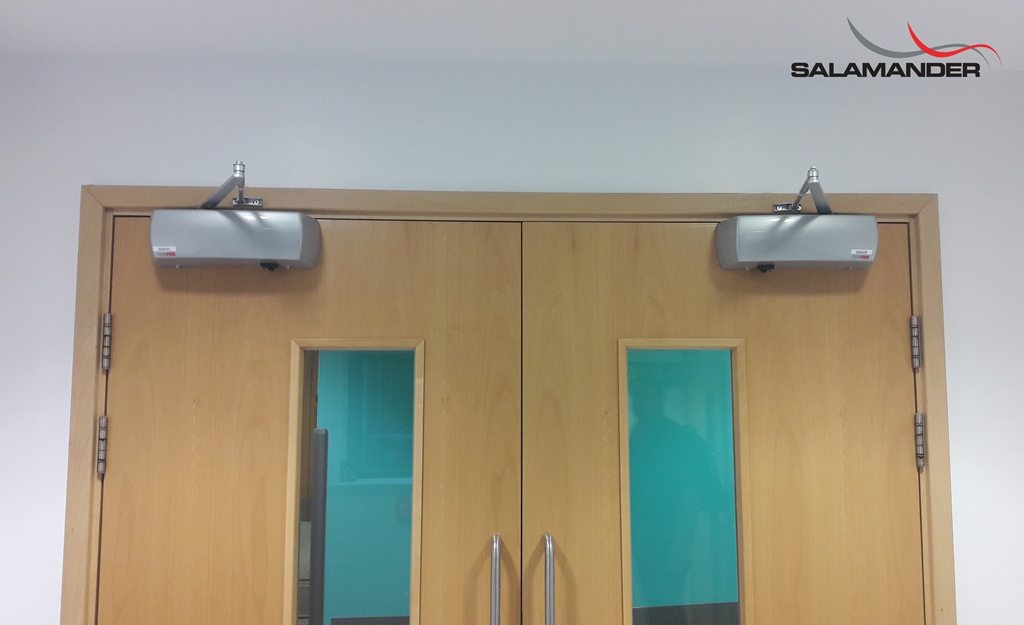Geofire’s Salamander range provides fire door access solution for the NHS
Posted on October 13, 2017
Geofire has been accepted onto the list of ‘preferred suppliers’ for University College London Hospitals (UCLH) Trust, to supply its Salamander range of fire door holders and closers to the healthcare buildings they own and manage across one of the larger NHS Trusts in London.
Geofire’s products were trialled and tested at two of UCLH’s locations in the Trust to establish their suitability in a healthcare environment, the results proved to be positive and the radio controlled group of Salamander products were given approval for use by the Trust.
The acknowledgment and inclusion will see the trusted system installed across the estate of the UCLH to legally hold open fire doors in Category ‘A’ healthcare buildings, closing the doors in the event of a fire to protect patients and staff.
Andy Collinson, CEO of Geofire said: “We are thrilled to have our products accepted by the NHS Foundation Trust. We believe this is a true reflection of how well the Salamander system works and can provide an excellent solution for hospitals and other buildings. We look forward to working with the UCLH Trust on future properties and installations.”
Each Salamander device connects wirelessly to a mains-powered controller unit, which is connected to the building’s existing fire alarm system. The system is suitable for a BS7273-4 critical actuation (category A) installation to ensure that fire doors will safely close in the event of a fault or fire. One controller unit can manage up to 99 fire door closers or fire door holders.
Geofire’s Salamander range of radio controlled fire door safety products are all battery-powered and wire-free, saving time, installation costs and disruption to a building’s fabric or occupants. Both the fire door holder and closer are fitted to the top of the door ensuring a hygienic installation.
< Back to Articles
